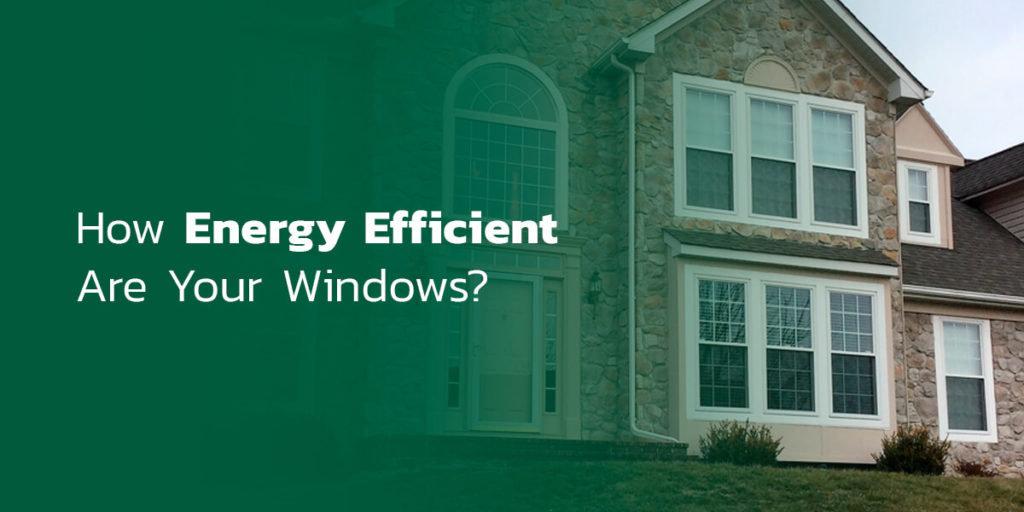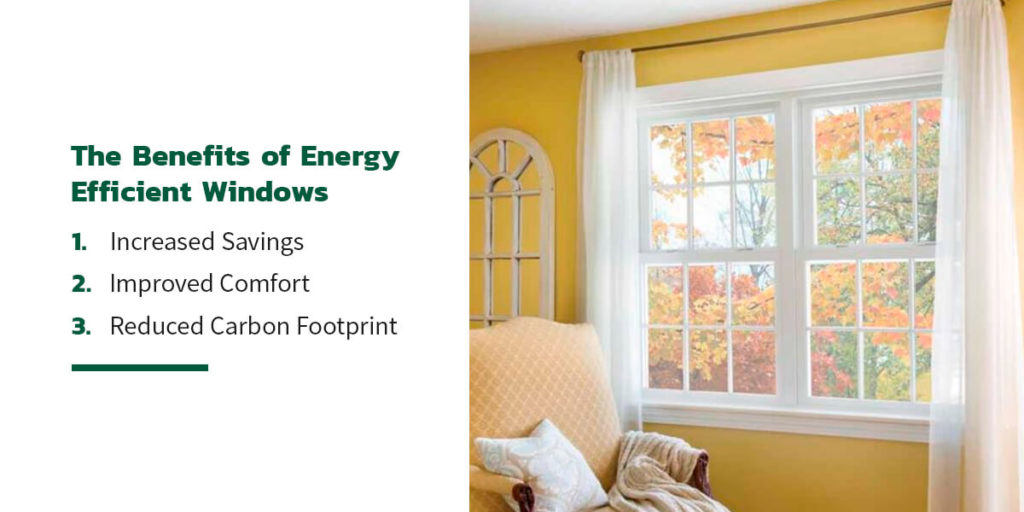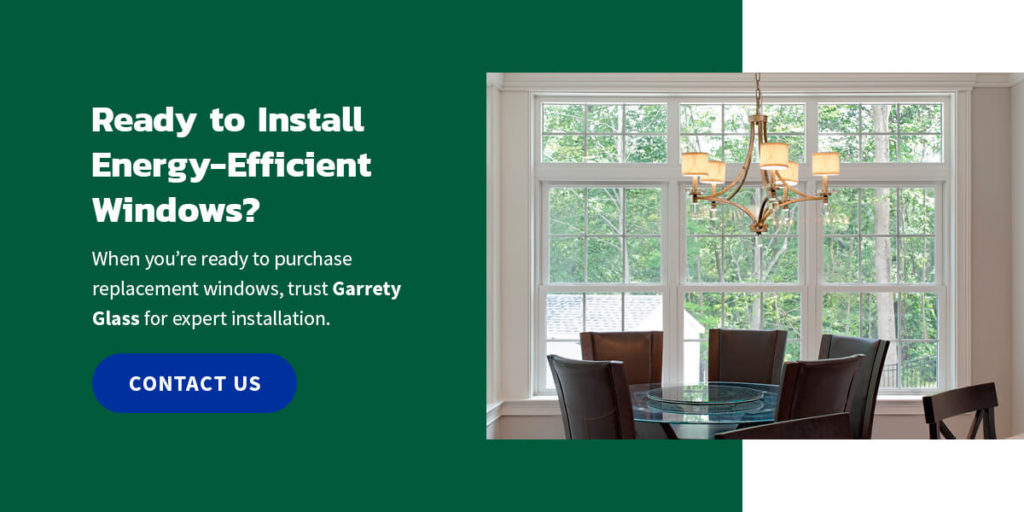
It’s always an excellent idea to consider energy efficiency before purchasing new windows. High-quality windows provide extra comfort, increase your home’s value and help you save money on your monthly energy bills.
You’ll want to consider the energy efficiency of your current windows and use the same criteria when purchasing new ones. Follow our guide to learn how to determine energy efficiency and the benefits energy-efficient windows provide for your home.
How Is Energy Efficiency Rated for Windows?
While shopping for new windows, you’ll probably notice certain products with an ENERGY STAR label. ENERGY STAR is a program run by the Environmental Protection Agency (EPA) to help consumers purchase energy-efficient products, save money and protect the environment.
The National Fenestration Rating Council (NFRC) is a nonprofit program used by ENERGY STAR that uses a scale to determine how good a product is.
Gauging a window’s energy efficiency involves measuring the conduction and resistance to heat flow, air leakage and solar heat gain. While shopping for windows, you may run into a few terms in the label’s description, such as:
- R-value: The R-value measures the window’s resistance to heat flow at the center of the glass and the window frame. The higher the number on an R-value scale, the better the product.
- U-factor: The U-factor describes the conduction of the heat flow, with a scale that runs from zero to one, with lower numbers indicating a more efficient window.
- Solar heat gain coefficient (SHGC): The solar heat gain describes a window’s ability to block heat-producing rays based on a scale of zero to one. Similar to the U-factor, the lower the number, the better the product.
- Air leakage: A window’s air leakage is measured in cubic feet per minute, with lower numbers indicating less air leakage.
Checking the labels and product specifications will help you compare windows to determine the most energy-efficient option for your home.
How to Determine Your Windows’ Energy Efficiency
A few factors can determine the energy efficiency of your current windows. Window type, style and age are just a few ways to gauge quality.
Number of Panes
Unlike single-pane windows, double and triple-pane windows provide insulation layers between your home’s air and outside air. The more panes, the more efficient the window. For instance, single-pane windows are inefficient, with an R-value of one, while untreated double-pane and triple-pane windows have higher R-values to indicate a higher resistance to heat flow.
Type of Window
How airtight and efficient your windows are can depend on the style of windows in your home. A few examples include:
- Single-hung windows consist of two sashes with an unmoveable sash on top and a moving sash on the bottom. Since the upper sash fixes snug to the window frame, single-hung windows tend to be more airtight than other windows.
- Double-hung windows use consist of two moveable sashes that slide on independent tracks. These windows meet the exact energy requirements as single-hung windows, though they may lose efficiency over time since the sashes can loosen on their tracks.
- Casement windows swing outward on hinges and can be closed with a crank. Designed to seal tightly when closed, casement windows are extremely energy efficient.
Age of Window
If you have older windows, the chances are they will need replacing to ensure efficiency. While you can often treat newer windows to be more energy-efficient, it’s typically more cost-effective to consider replacement windows when they’re old. Weathered windows may have looser seals and higher air transfer.

The Benefits of Energy Efficient Windows
Heat gain and heat loss are responsible for 25% to 30% of heating and cooling energy use, meaning replacing your old windows can save you money on energy bills and keep your home comfortable. These benefits help you improve your quality of life and reduce your carbon footprint while making your home more profitable and easier to sell.
1. Increased Savings
Due to the airtight qualities of high-efficiency windows, you’ll see an improvement in your monthly utility bills. Homes across the nation save an average of 12% per year when they replace single-pane windows, or over $583, depending on the average climate of the area you live. When you reduce your heating and cooling bills, you can save money and spend it elsewhere.
2. Improved Comfort
A drafty house can be uncomfortable, especially in the summer and winter months, when temperatures are more extreme. You’ll avoid the winter chills and the summer sweat with a high-quality window replacement.
Eliminate fluctuating temperatures to keep them consistent and comfy by switching to energy-efficient windows. An airtight window will help you keep your heat low in the winter without running it up and losing energy to leaks.
3. Reduced Carbon Footprint
With energy-efficient windows, your home will hold in the heat and cold air that can often leak with low-efficiency windows such as single panes. When you run your AC or heat too often, it forces power plants to release more carbon emissions into the air, causing adverse effects on our environment.
You can find energy-efficient windows approved by ENERGY STAR that ensure lower carbon emissions while you help to protect the environment.
Window Energy Efficiency FAQ
We see many questions about cost-effectiveness and energy-efficient windows. We’ve included two of the most common questions below and our answers.
Do Energy-Efficient Windows Increase Home Value?
High-quality windows are an investment that provides return over months and years. In fact, energy-efficient windows can deliver around a 70% return on investment (ROI) or higher for homeowners. They help protect furnishings such as carpets from fading due to damaging UV rays. They also help reduce carbon emissions and increase energy savings — making them highly desirable and easier to sell your home for a higher profit.
How Much do Energy-Efficient Windows Cost?
Energy Efficient windows vary in cost and depend on the quality of materials, the manufacturers and window type, among other factors. On average, a double-hung mid-range window can range from $200 to $1,200.
Types of Energy Efficient Window Glass
The durability and functionality of your windows will factor into their overall efficiency. When shopping for new windows, consider the type of gas used in the glass and the frame materials. You can also compare the labels on your future windows to determine NFRC ratings. These will help you decide on its energy-related properties and how it will stand up to the elements.
Two types of window glass include:
- Frame: The thermal resistant properties in your window frames will contribute to heat loss rate and its U-factor. Vinyl, wood and fiberglass provide better thermal resistance than metal.
- Low-emissivity glass: Low-e glass uses metallic oxide to keep the heat in your home in the winter while preventing damaging UV rays from entering in the summer. To improve their R-value, you can quickly treat your double or trip pane windows with low-e glass coatings. In colder climates, gas-filled windows with low-e coatings will reduce heat loss and heat gain in warmer temperatures.

Ready to Install Energy-Efficient Windows?
When you’re ready to purchase replacement windows, trust Garrety Glass for expert installation. We are a locally owned and operated company specializing in glass and windows. Our high-quality materials will help you improve your home’s energy efficiency and increase its resale value.
For a free window consultation, fill out our online form or call 717-741-9949 today!